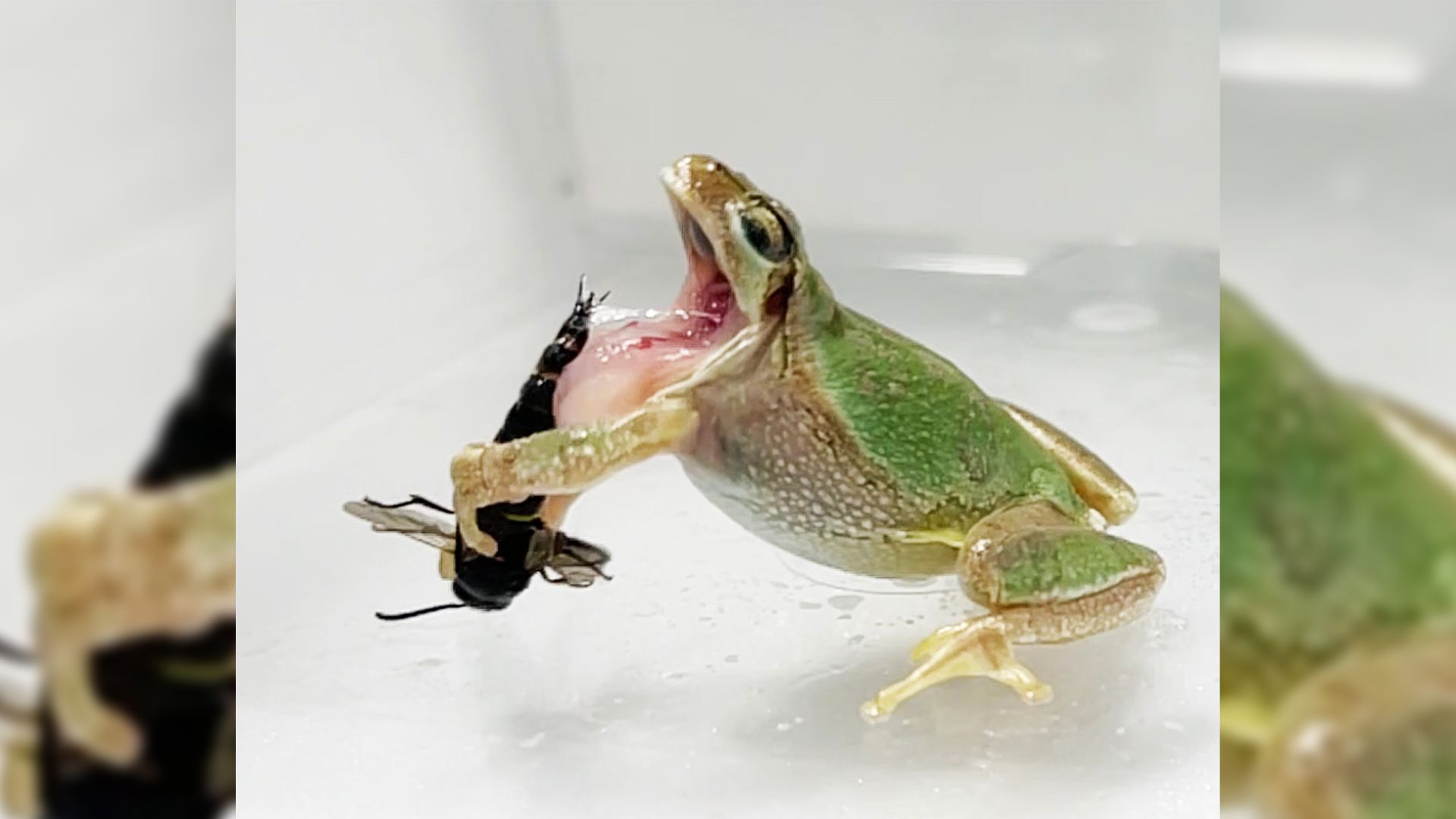This wasp uses its prickly penis to escape certain death
Male mason wasps have no venom, but they can still stab predators with their genitals.

Only female wasps carry the equipment necessary to sting predators and inject them with toxins. It's therefore widely thought that male wasps are completely defenseless — but now, a study shows how some male wasps can escape certain death using nonvenomous but extremely spiky genitalia.
Two thin, retractable "genital spines" lie on either side of the male mason wasp's (Anterhynchium gibbifrons) phallus. Some wasps use such spines to hold females in place during mating, but male mason wasps don't appear to do so, at least not in laboratory settings, according to a new study published Monday (Dec. 19) in the journal Current Biology. Instead, the wasps brandish their spiky phalluses only when confronted with a perceived predator — like the hand of a human scientist.
Study co-author Misaki Tsujii, a student in the Graduate School of Agricultural Science at Kobe University in Japan, was studying the life cycle of mason wasps when she felt a sudden "pricking pain" in her finger. She'd been handling a male wasp, which she'd believed to be harmless, and was surprised at the sensation, she told Live Science in an email.
Tsujii and her coauthor Shinji Sugiura, an associate professor in Kobe University's Graduate School of Agricultural Science, designed an experiment to see if the wasps could use their genitals to fend off predators they might encounter in the wild. They brought Japanese tree frogs (Dryophytes japonica) into the lab, placed them in containers with male mason wasps, set up cameras and waited.
Related: Cannibal wasp babies eat their siblings, because nature is brutal

When the tree frogs hinged open their mouths to gobble up the wasps, the insects responded by snapping at the frogs with their mandibles and stabbing the frogs with their genital spines. Most of the wasps' defensive efforts were in vain, however, as nearly 65% of the insects were ultimately eaten. But in 35.3% of cases, the tree frogs spat out the struggling wasps and let them be.
The team repeated this experiment with male wasps whose genitals had been removed and found that all the genitalia-less insects were quickly swallowed, although the wasps continued to bite at the frogs with their mandibles.
Sign up for the Live Science daily newsletter now
Get the world’s most fascinating discoveries delivered straight to your inbox.
"Therefore, genital spines of male genitalia appear to play a role in preventing tree frogs from swallowing male wasps," the authors wrote.
The effectiveness of the males' genital spines pales in comparison to female wasps' true stingers, the team found. For starters, tree frogs were about half as likely to attempt to eat the female wasps in the first place, and when they did attack, they spat out the females about 87.5% of the time.
The scientists also exposed both male and female mason wasps to a second predator, the black-spotted pond frog (Pelophylax nigromaculatus). However, this frog was impervious to both the male's and female's defenses and quickly gobbled them up.
"Pond frogs may have a high sting tolerance," Sugiura told Live Science in an email. "A previous study reported that a pond frog could eat even a venomous hornet." In addition, pond frogs live on the ground and encounter mason wasps less frequently than tree frogs do, as the wasps' favorite flowers grow on tree-climbing vines. So mason wasps may not be under strong pressure to evolve defenses that work against pond frogs.
The authors suspect that many other male wasps with "pseudo-stings" on their genitalia use the spikes for self-defense, Sugiura said. This hypothesis isn't new — it can be found in the Encyclopedia of Insects (Academic Press, 2009) — but it hasn't been formally tested in experiments with different wasp species, the team noted in their report.

Nicoletta Lanese is the health channel editor at Live Science and was previously a news editor and staff writer at the site. She holds a graduate certificate in science communication from UC Santa Cruz and degrees in neuroscience and dance from the University of Florida. Her work has appeared in The Scientist, Science News, the Mercury News, Mongabay and Stanford Medicine Magazine, among other outlets. Based in NYC, she also remains heavily involved in dance and performs in local choreographers' work.










